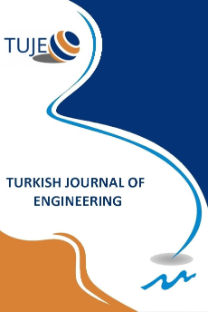INVESTIGATION OF ULEXITE USAGE IN AUTOMOTIVE BRAKE FRICTION MATERIALS
INVESTIGATION OF ULEXITE USAGE IN AUTOMOTIVE BRAKE FRICTION MATERIALS
___
- Anderson, A. E. (1992). ASM handbook, Friction, lubrication, and wear technology 18, pp. 569-577.
- Başar, G., Buldum, B.B., Sugözü, İ. (2017). “Effects of Colemanite and Ulexite on the Tribological Characteristics of Brake Friction Materials.” Proc., International Advanced Researches & Engineering Congress, Osmaniye, Turkey, pp. 87-94.
- Bijwe, J., Aranganathan, N., Sharma, S., Dureja, N. and Kumar, R. (2012). “Nano-abrasives in friction materialsinfluence on tribological properties.” Wear, Vol. 296, No. 1, pp. 693-701.
- Çalık, A. (2002). “Turkey boron minerals and features.” Engineer and Machinery, Vol. 508, pp. 1-9.
- Kuş, H., Altıparmak, D. and Başar G. (2016). “The Effect of Colemanite Content on Friction-Wear Properties of the Bronze Based Brake Lining Material Reinforced with Fly Ash Fabricated by the Hot Pressing Method.” Journal of Polytechnic, Vol. 19, No. 4, pp. 537-546.
- Özkan, Ş. G., Çebi, H., Delice, S., and Doğan, M. (1997). “Boron minerals properties and mining.” Proc., 2nd Industrial Minerals Symposium, İzmir, Turkey, pp. 224- 228.
- Stachowiak, G.W. and Batchelor, A.W. (2001). Engineering Tribology, Heineman, Boston, MA, pp. 36- 44.
- Sugözü, İ. (2009). Production of non-asbestos automotive brake lining additional boron and investigation of its braking characteristic, PhD Thesis, Fırat University, Elazığ, Turkey.
- Sugözü, I. (2015). “Investigation of using rice husk dust and ulexite in automotive brake pads.” Materials Testing, Vol. 57, No. 10, pp. 877-882.
- Sugözü, B. (2016). The effect of additive of nano silica, nano alumina and nano zircon abrasive particles on brake lining properties, PhD Thesis, Selçuk University, Konya, Turkey.
- TS 555 (1992). Highway Vehicles-Brake System-Brake Pads for Friction Brake, Turkish Standard Institute, Ankara, Turkey.
- TS 9076 (1991). Road Vehicles-Brake LiningsEvaluation of Friction Material Characteristics- Small Sample Bench Test Procedure, Turkish Standard Institute, Ankara, Turkey.
- Wannik, W. B., Ayob, A. F., Syahrullail, S., Masjuki, H. H. and Ahmad M. F. (2012). “The effect of boron friction modifier on the performance of brake pads.” International Journal of Mechanical and Materials Engineering, Vol. 7, No. 1, pp. 31-35.
- ISSN: 2587-1366
- Yayın Aralığı: 4
- Başlangıç: 2017
- Yayıncı: Mersin Uüniversitesi
RHEOLOGICAL PARAMETER ESTIMATION OF CMC-WATER SOLUTIONS USING MAGNETIC RESONANCE IMAGING (MRI)
MEHMET ACI, ÇİĞDEM ACI, Mutlu AVCI
COMPARATIVE STUDYOF REGIONAL CRASH DATA IN TURKEY
INVESTIGATION OF Ni-MnBASED SHAPE MEMORY ALLOY VARIATIONS TRANSFORMATION TEMPERATURES
Ece KALAY, Anıl Erdağ NOMER, Mehmet Ali KURGUN
INVESTIGATION OF ULEXITE USAGE IN AUTOMOTIVE BRAKE FRICTION MATERIALS
Mehmet Acı, Çiğdem İnan Acı, Mutlu Avcı
Babatunde Michael OJO, Musibau Keulere FASASİ, Ayodeji Olalekan SALAU, Stephen Friday OLUKOTUN, Mathew Ademola JAYEOLA
